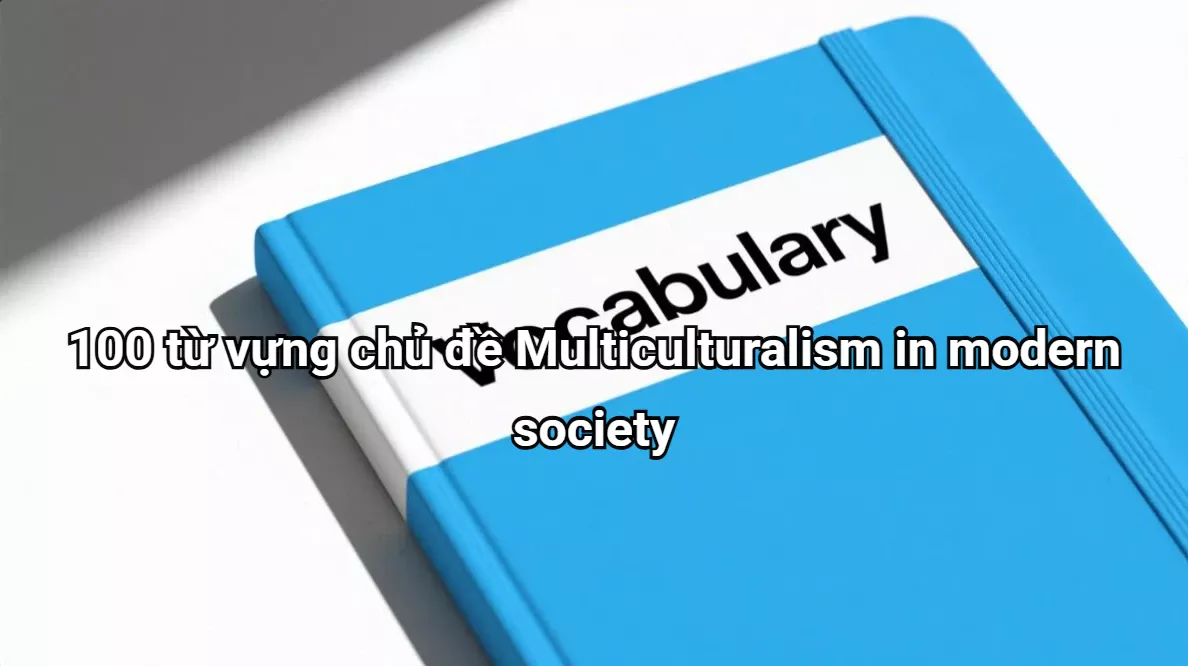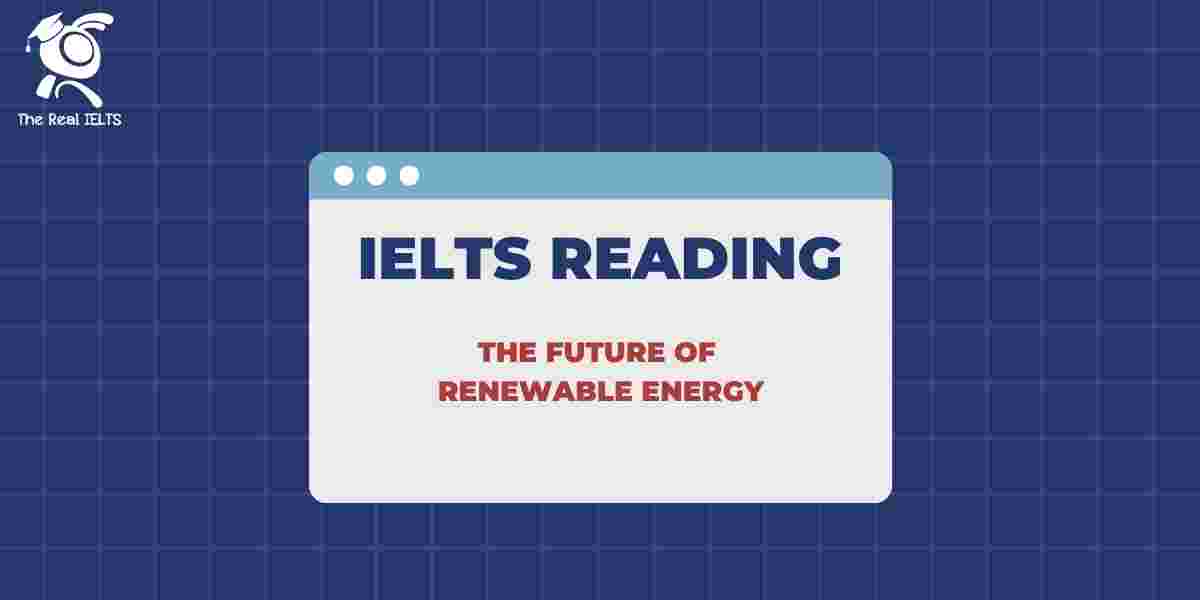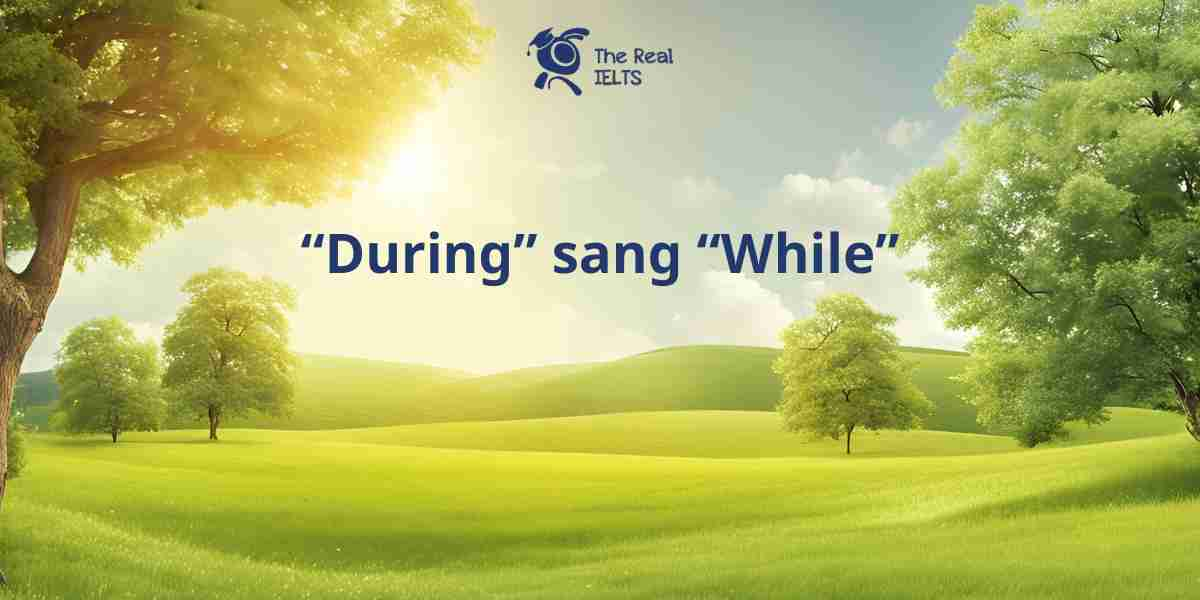Đề thi IELTS Reading có tiêu đề “The Challenges of Environmental Sustainability”
Nhớ đọc thêm các bài luyện thi IELTS nhé.
IELTS Reading “The Challenges of Environmental Sustainability“
The Challenges of Environmental Sustainability
Environmental sustainability has become a critical issue in the 21st century as humanity grapples with the consequences of rapid industrialization, population growth, and resource depletion. The concept of environmental sustainability refers to the ability to maintain the quality and availability of natural resources over time while minimizing the negative impact on the planet. However, achieving this goal presents numerous challenges, each of which requires thoughtful consideration and coordinated action at both the local and global levels.
One of the most significant challenges to environmental sustainability is the overconsumption of natural resources. As the global population continues to grow, the demand for resources such as water, fossil fuels, and arable land increases exponentially. This overconsumption leads to the depletion of non-renewable resources and the degradation of ecosystems. For instance, deforestation, driven by the need for agricultural land and timber, not only reduces biodiversity but also contributes to climate change by releasing stored carbon dioxide into the atmosphere. Addressing overconsumption requires a fundamental shift in how societies use and manage resources, promoting efficiency, conservation, and the adoption of renewable alternatives.
Another critical challenge is pollution, which poses a significant threat to both human health and the environment. Pollution comes in many forms, including air, water, and soil contamination, as well as the accumulation of plastic waste. Industrial activities, transportation, and agricultural practices are major sources of pollutants that contribute to environmental degradation. For example, air pollution from vehicle emissions and industrial processes is a leading cause of respiratory diseases and has been linked to climate change through the release of greenhouse gases. Similarly, water pollution from chemical runoff and plastic waste disrupts aquatic ecosystems and contaminates drinking water supplies. Tackling pollution requires stricter regulations, technological innovations, and a cultural shift towards reducing waste and promoting sustainable practices.
Climate change is perhaps the most pressing challenge facing environmental sustainability. The rise in global temperatures, driven by the accumulation of greenhouse gases in the atmosphere, has far-reaching consequences for the planet. These include more frequent and severe weather events, rising sea levels, and shifts in ecosystems that threaten biodiversity. The impact of climate change is felt most acutely by vulnerable populations, particularly those in developing countries who are least equipped to adapt to these changes. Mitigating climate change requires a global effort to reduce carbon emissions, transition to renewable energy sources, and implement adaptation strategies to protect communities from the worst effects.
Biodiversity loss is another significant challenge that threatens environmental sustainability. Human activities such as deforestation, urbanization, and pollution have led to the extinction of numerous species and the degradation of habitats. The loss of biodiversity has profound implications for ecosystem stability, as each species plays a unique role in maintaining the balance of natural processes. For example, the decline in pollinator populations, such as bees, poses a threat to global food security as many crops rely on these insects for pollination. Protecting biodiversity requires the preservation of natural habitats, the restoration of degraded ecosystems, and the promotion of sustainable land-use practices.
Addressing the challenges of environmental sustainability also involves overcoming socio-economic barriers. Economic growth has traditionally been linked to environmental exploitation, with industries prioritizing short-term profits over long-term sustainability. Additionally, poverty and inequality can exacerbate environmental degradation, as marginalized communities often rely on unsustainable practices for survival. Achieving environmental sustainability requires integrating environmental considerations into economic planning, promoting green technologies, and ensuring that sustainable development benefits all segments of society.
Finally, fostering a culture of sustainability is essential to overcoming these challenges. Public awareness and education play a crucial role in shaping attitudes and behaviors towards the environment. Governments, businesses, and civil society must work together to promote sustainable practices, such as reducing waste, conserving energy, and supporting environmentally friendly products and services. Encouraging individual responsibility and collective action can help build a society that values and protects the environment for future generations.
In conclusion, the challenges of environmental sustainability are complex and multifaceted, requiring a comprehensive approach that addresses the root causes of environmental degradation. By promoting resource efficiency, reducing pollution, combating climate change, protecting biodiversity, and integrating sustainability into economic and social planning, humanity can work towards a more sustainable future. However, achieving this goal will require the commitment and cooperation of all stakeholders, from individuals to governments, to ensure that the planet’s resources are preserved for generations to come.
Đề bài thi IELTS Reading
Multiple Choice (Câu hỏi trắc nghiệm)
- What is one of the main challenges to environmental sustainability?
- A) Overpopulation
- B) Overconsumption of resources
- C) Lack of education
- D) Technological advancements
- Which of the following is NOT mentioned as a form of pollution?
- A) Air pollution
- B) Light pollution
- C) Water pollution
- D) Soil contamination
- How does deforestation contribute to climate change?
- A) By increasing oxygen levels
- B) By releasing stored carbon dioxide
- C) By decreasing air pollution
- D) By reducing human population
- What is a major source of air pollution?
- A) Agricultural practices
- B) Household waste
- C) Vehicle emissions
- D) Water treatment plants
- What does the text suggest as a solution to overconsumption?
- A) Increasing fossil fuel production
- B) Shifting towards renewable alternatives
- C) Promoting deforestation
- D) Expanding urban areas
- What is one of the most significant impacts of climate change according to the text?
- A) Increasing biodiversity
- B) More frequent and severe weather events
- C) Stabilizing ecosystems
- D) Reducing global temperatures
- What role do bees play in environmental sustainability?
- A) Pollination of crops
- B) Decomposition of organic matter
- C) Prevention of water pollution
- D) Carbon dioxide absorption
- Why is biodiversity important for ecosystem stability?
- A) It increases the human population
- B) It maintains the balance of natural processes
- C) It reduces the need for renewable resources
- D) It promotes deforestation
- What does the text mention as a socio-economic barrier to environmental sustainability?
- A) Lack of technology
- B) Economic growth linked to environmental exploitation
- C) Increasing literacy rates
- D) Declining urbanization
- What is necessary to overcome socio-economic barriers to sustainability?
- A) Short-term profits
- B) Green technologies
- C) Increasing fossil fuel use
- D) Deforestation
True/False/Not Given (Đúng/Sai/Không được đề cập)
- The text states that renewable resources are being depleted.
- True
- False
- Not Given
- The text mentions that air pollution is a major cause of cardiovascular diseases.
- True
- False
- Not Given
- Climate change is primarily caused by the increase in greenhouse gases.
- True
- False
- Not Given
- The text suggests that industrialization has no impact on environmental sustainability.
- True
- False
- Not Given
- The text mentions that developing countries are least affected by climate change.
- True
- False
- Not Given
- Public awareness and education are crucial for promoting sustainable practices.
- True
- False
- Not Given
- The text mentions that pollution has no impact on human health.
- True
- False
- Not Given
- Economic growth always leads to environmental degradation.
- True
- False
- Not Given
- Urbanization is a significant factor in biodiversity loss.
- True
- False
- Not Given
- Green technologies are mentioned as a solution to economic barriers to sustainability.
- True
- False
- Not Given
Yes/No/Not Given (Có/Không/Không được đề cập)
- Does the author believe that addressing overconsumption is necessary for environmental sustainability?
- Yes
- No
- Not Given
- Does the author agree that stricter regulations alone can solve pollution issues?
- Yes
- No
- Not Given
- Does the text suggest that individual responsibility is not important for sustainability?
- Yes
- No
- Not Given
- Does the author believe that climate change affects all populations equally?
- Yes
- No
- Not Given
- Does the text propose that environmental sustainability can be achieved without public awareness?
- Yes
- No
- Not Given
Matching Information (Nối thông tin)
- Match the challenges to the examples provided in the text:
- Overconsumption →
- Pollution →
- Climate change →
- Biodiversity loss →
- A) Deforestation
- B) Vehicle emissions
- C) More frequent weather events
- D) Decline in pollinator populations
Matching Headings (Nối tiêu đề với đoạn văn)
- Match the following headings to the paragraphs:
- A) The impact of overconsumption on the environment
- B) The dangers of pollution
- C) Climate change and its global consequences
- D) The importance of biodiversity for ecosystem stability
- E) Overcoming socio-economic barriers to sustainability
Matching Features (Nối đặc điểm)
- Match the following features to the relevant challenge:
- Increased demand for resources →
- Contribution to climate change →
- Disruption of aquatic ecosystems →
- Threat to food security →
- A) Overconsumption
- B) Pollution
- C) Climate change
- D) Biodiversity loss
Matching Sentence Endings (Nối phần kết câu)
- Match the beginnings of the sentences to their correct endings:
- Overconsumption leads to…
- Pollution from vehicle emissions…
- Biodiversity loss results in…
- Economic growth traditionally…
- A) has been linked to environmental exploitation.
- B) the depletion of non-renewable resources.
- C) reduced ecosystem stability.
- D) is a major cause of respiratory diseases.
Sentence Completion (Hoàn thành câu)
- The text suggests that addressing _______ is essential for environmental sustainability.
- One major form of pollution mentioned in the text is _______.
- Climate change is driven by the accumulation of _______ in the atmosphere.
- The decline in pollinator populations, such as bees, poses a threat to _______.
- The text mentions that economic growth has traditionally been linked to _______ exploitation.
Summary Completion (Hoàn thành tóm tắt)
- Environmental sustainability faces numerous challenges, including _______ of natural resources and various forms of _______. The rise in _______ is another significant issue that threatens the planet’s ecosystems and biodiversity.
Diagram Label Completion (Hoàn thành nhãn của sơ đồ)
- Complete the diagram based on the information in the text:
- Causes of Environmental Degradation:
- Overconsumption of _______
- Pollution from _______
- Loss of _______
Short Answer Questions (Câu hỏi trả lời ngắn)
- What is one major consequence of deforestation?
- How does air pollution impact human health?
- What is a socio-economic barrier to environmental sustainability mentioned in the text?
- Why is biodiversity important for ecosystems?
Đáp án bài thi IELTS Reading
Multiple Choice (Câu hỏi trắc nghiệm)
- B) Overconsumption of resources
- B) Light pollution
- B) By releasing stored carbon dioxide
- C) Vehicle emissions
- B) Shifting towards renewable alternatives
- B) More frequent and severe weather events
- A) Pollination of crops
- B) It maintains the balance of natural processes
- B) Economic growth linked to environmental exploitation
- B) Green technologies
True/False/Not Given (Đúng/Sai/Không được đề cập)
- False – The text mentions the depletion of non-renewable resources, not renewable resources.
- Not Given – The text mentions respiratory diseases caused by air pollution but does not specifically mention cardiovascular diseases.
- True – The text mentions that climate change is driven by the accumulation of greenhouse gases in the atmosphere.
- False – The text clearly discusses the impact of industrialization on environmental sustainability.
- False – The text mentions that vulnerable populations, particularly in developing countries, are most acutely affected by climate change.
- True – The text states that public awareness and education play a crucial role in promoting sustainable practices.
- False – The text mentions that pollution poses a significant threat to human health.
- Not Given – The text discusses the link between economic growth and environmental exploitation but does not state that economic growth always leads to environmental degradation.
- True – The text mentions that urbanization contributes to biodiversity loss.
- True – The text mentions green technologies as a solution to socio-economic barriers to sustainability.
Yes/No/Not Given (Có/Không/Không được đề cập)
- Yes – The text suggests that addressing overconsumption is essential for environmental sustainability.
- No – The text mentions that stricter regulations are part of the solution but not the only solution to pollution issues.
- No – The text emphasizes the importance of individual responsibility and collective action for sustainability.
- No – The text indicates that the impact of climate change is felt most acutely by vulnerable populations, particularly in developing countries.
- No – The text mentions the importance of public awareness and education in promoting sustainable practices.
Matching Information (Nối thông tin)
- Overconsumption → A) Deforestation
- Pollution → B) Vehicle emissions
- Climate change → C) More frequent weather events
- Biodiversity loss → D) Decline in pollinator populations
Matching Headings (Nối tiêu đề với đoạn văn)
- A) The impact of overconsumption on the environment → Paragraph 2
- B) The dangers of pollution → Paragraph 3
- C) Climate change and its global consequences → Paragraph 4
- D) The importance of biodiversity for ecosystem stability → Paragraph 5
- E) Overcoming socio-economic barriers to sustainability → Paragraph 6
Matching Features (Nối đặc điểm)
- Increased demand for resources → A) Overconsumption
- Contribution to climate change → B) Pollution
- Disruption of aquatic ecosystems → B) Pollution
- Threat to food security → D) Biodiversity loss
Matching Sentence Endings (Nối phần kết câu)
- Overconsumption leads to… B) the depletion of non-renewable resources.
- Pollution from vehicle emissions… D) is a major cause of respiratory diseases.
- Biodiversity loss results in… C) reduced ecosystem stability.
- Economic growth traditionally… A) has been linked to environmental exploitation.
Sentence Completion (Hoàn thành câu)
- The text suggests that addressing overconsumption is essential for environmental sustainability.
- One major form of pollution mentioned in the text is air pollution.
- Climate change is driven by the accumulation of greenhouse gases in the atmosphere.
- The decline in pollinator populations, such as bees, poses a threat to food security.
- The text mentions that economic growth has traditionally been linked to environmental exploitation.
Summary Completion (Hoàn thành tóm tắt)
- Environmental sustainability faces numerous challenges, including overconsumption of natural resources and various forms of pollution. The rise in global temperatures is another significant issue that threatens the planet’s ecosystems and biodiversity.
Diagram Label Completion (Hoàn thành nhãn của sơ đồ)
- Causes of Environmental Degradation:
- Overconsumption of natural resources
- Pollution from industrial activities
- Loss of biodiversity
Short Answer Questions (Câu hỏi trả lời ngắn)
- What is one major consequence of deforestation?
Reduction of biodiversity and contribution to climate change. - How does air pollution impact human health?
It is a major cause of respiratory diseases. - What is a socio-economic barrier to environmental sustainability mentioned in the text?
Economic growth linked to environmental exploitation. - Why is biodiversity important for ecosystems?
It maintains the balance of natural processes.
Luyện tập bài khác ở bài viết:”100 bài luyện IELTS Reading 2024 – 2025“















